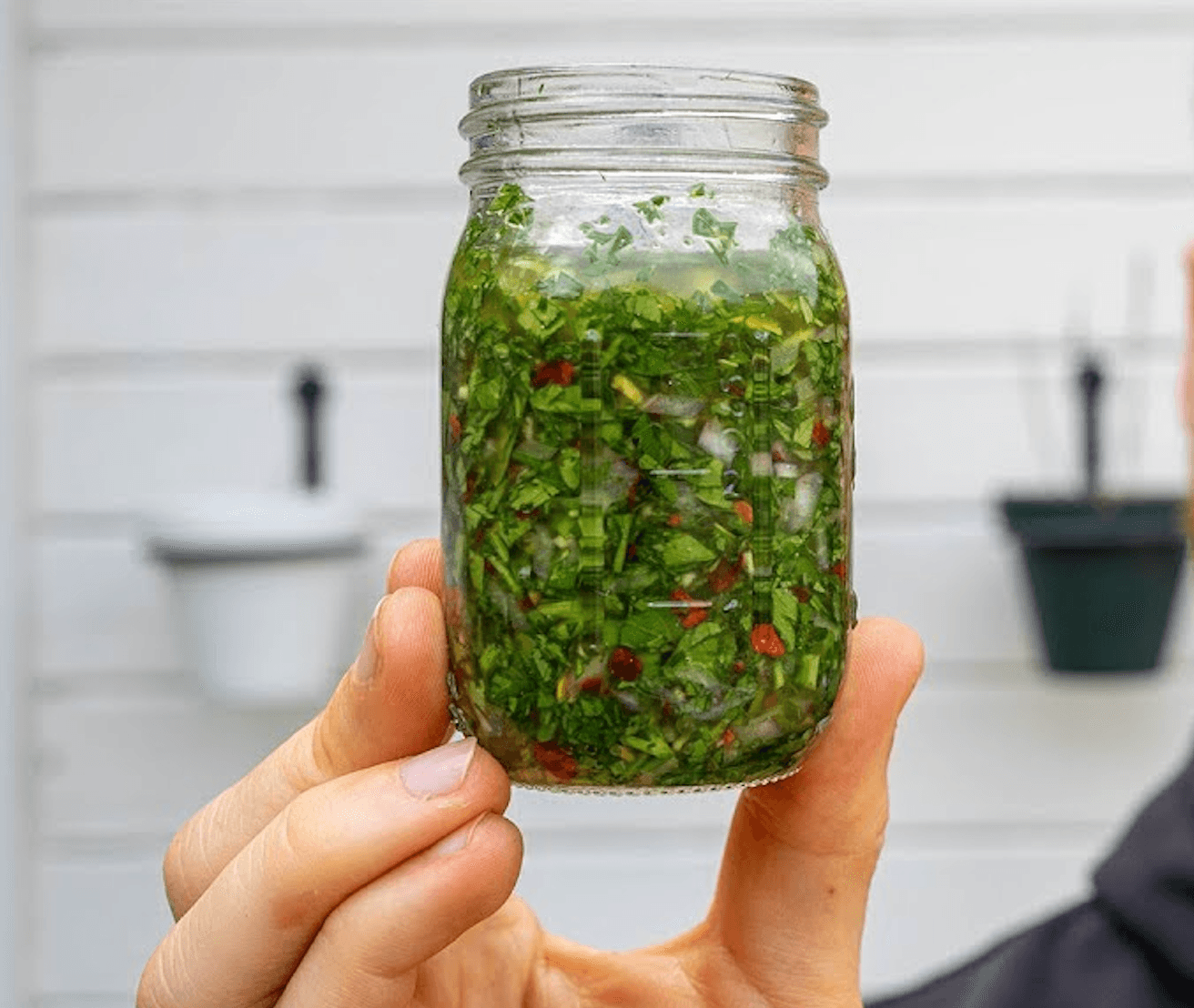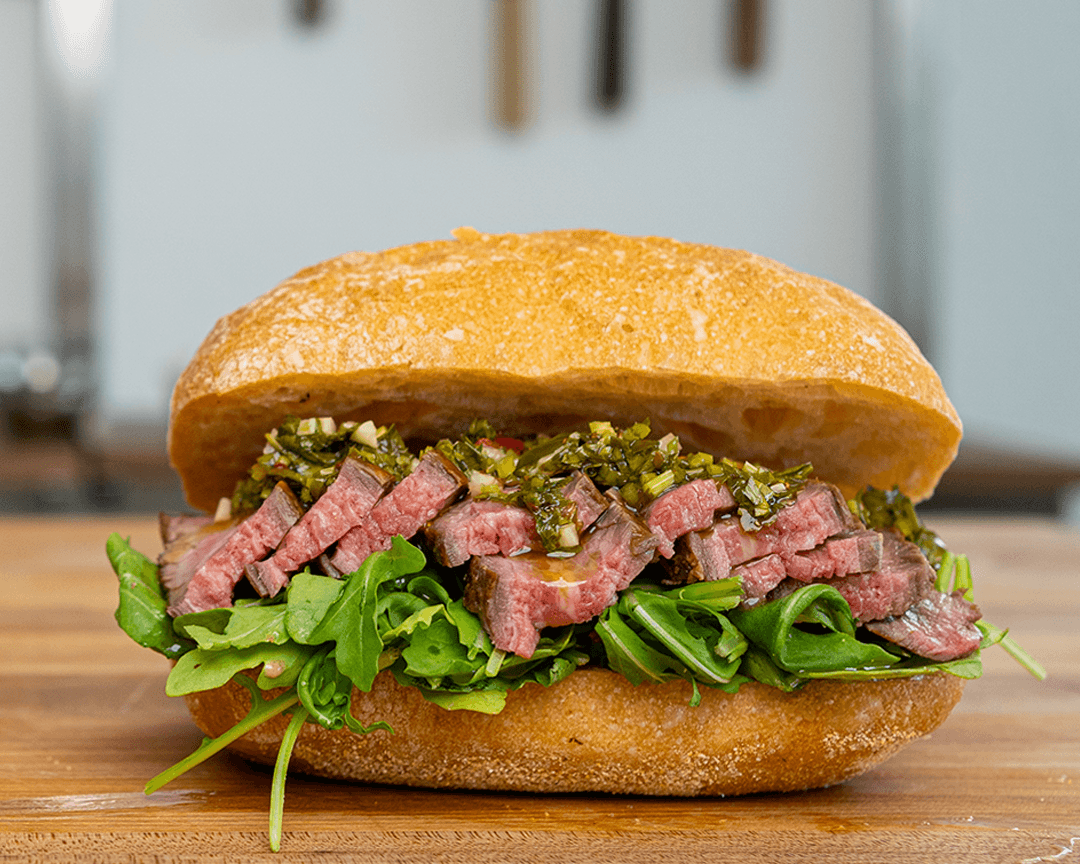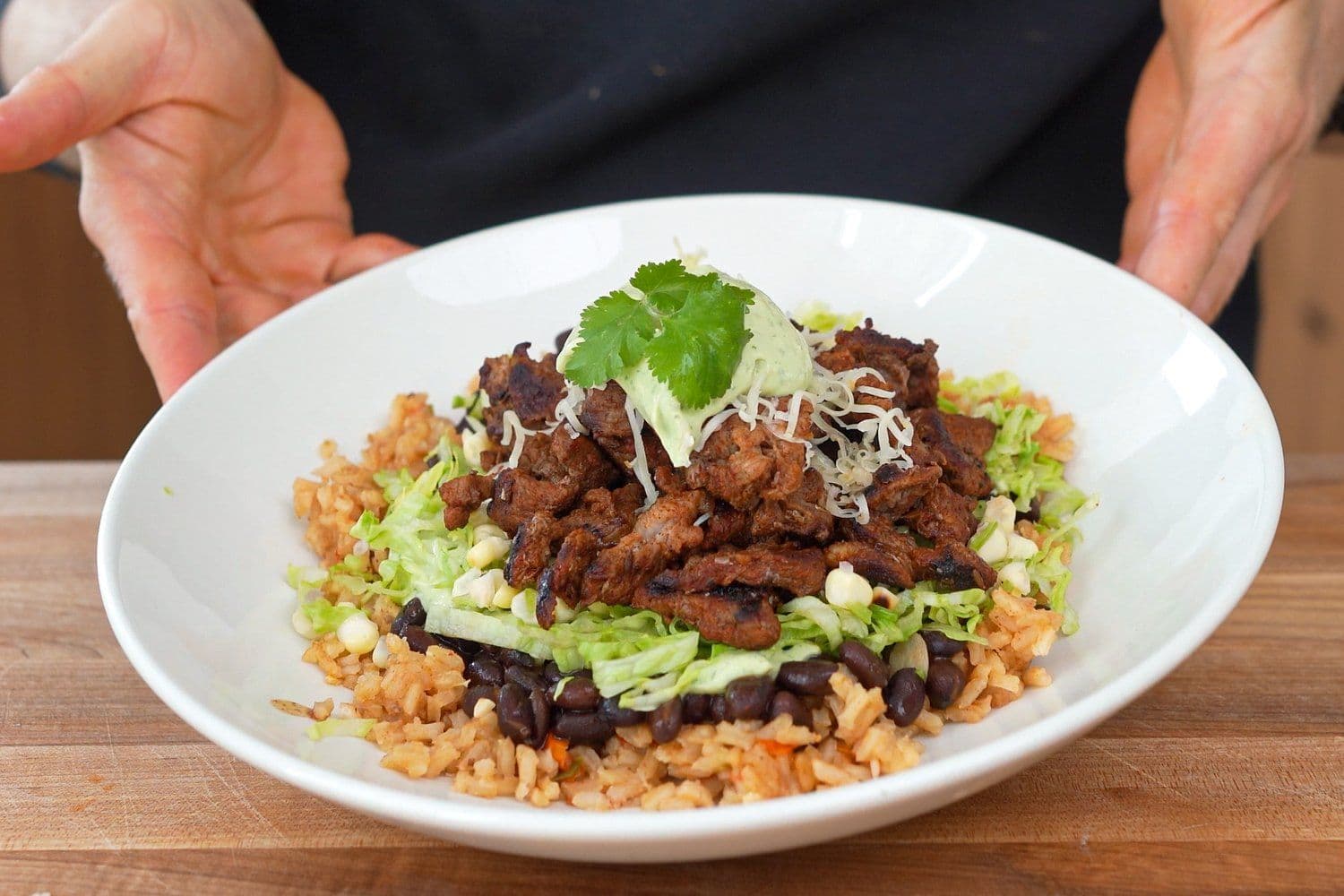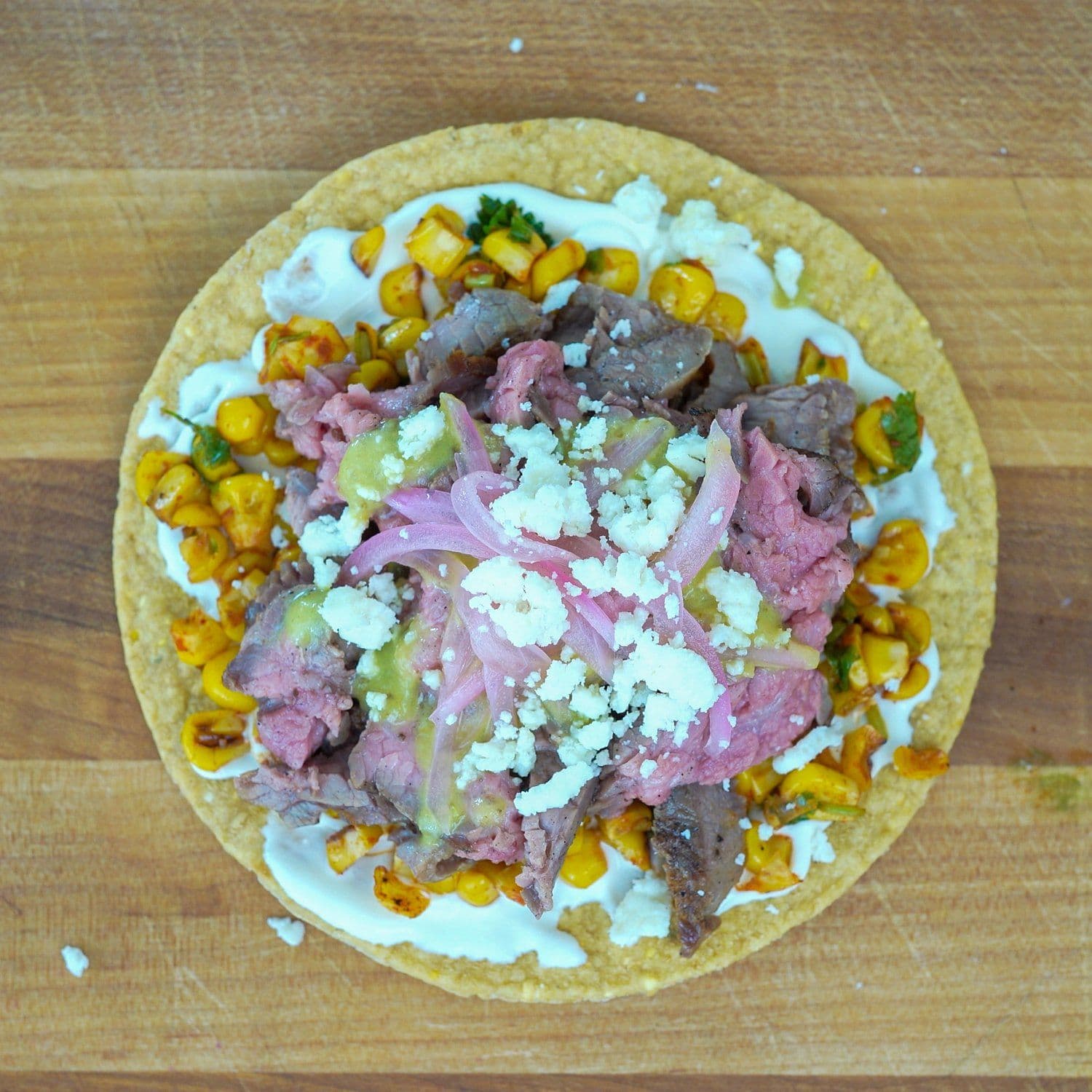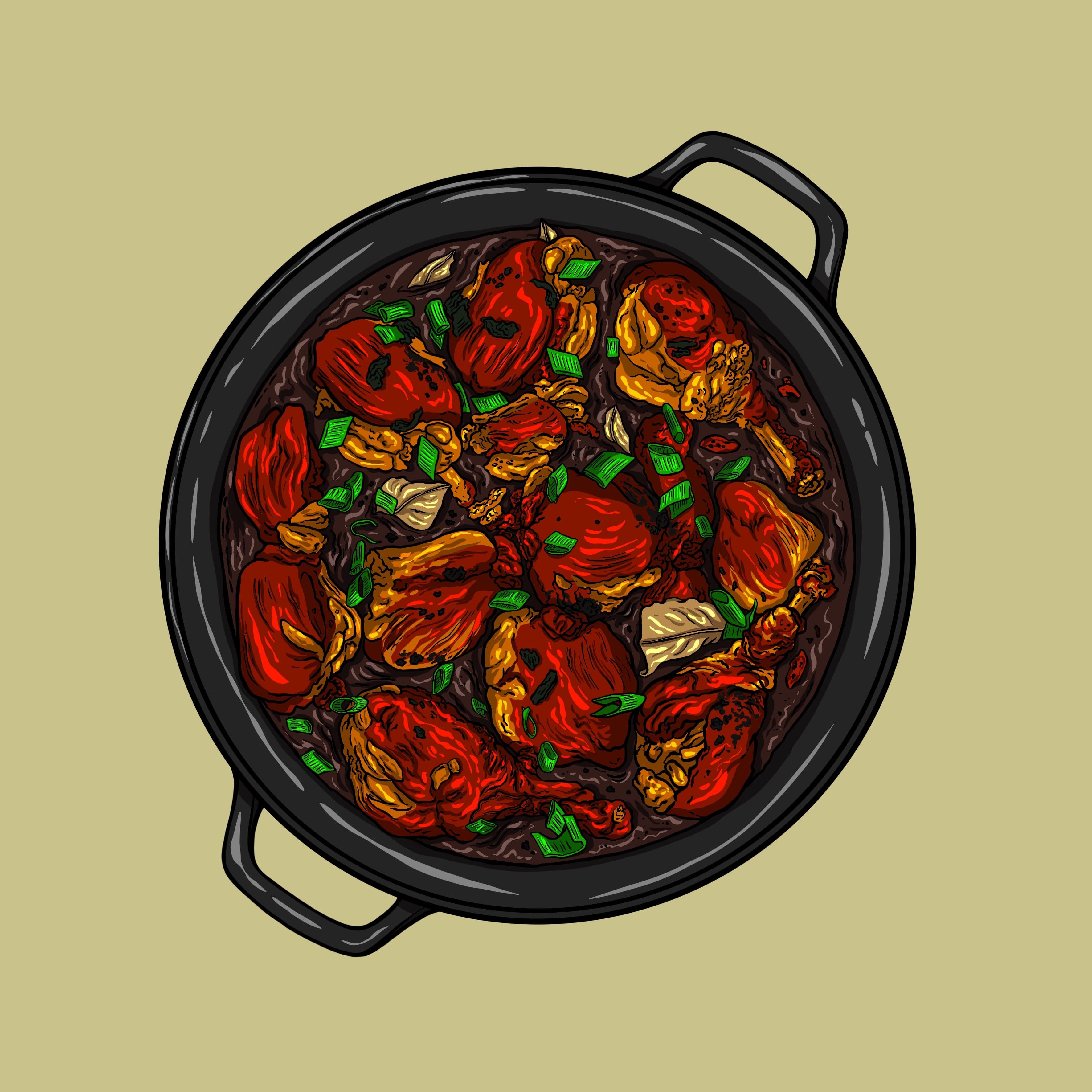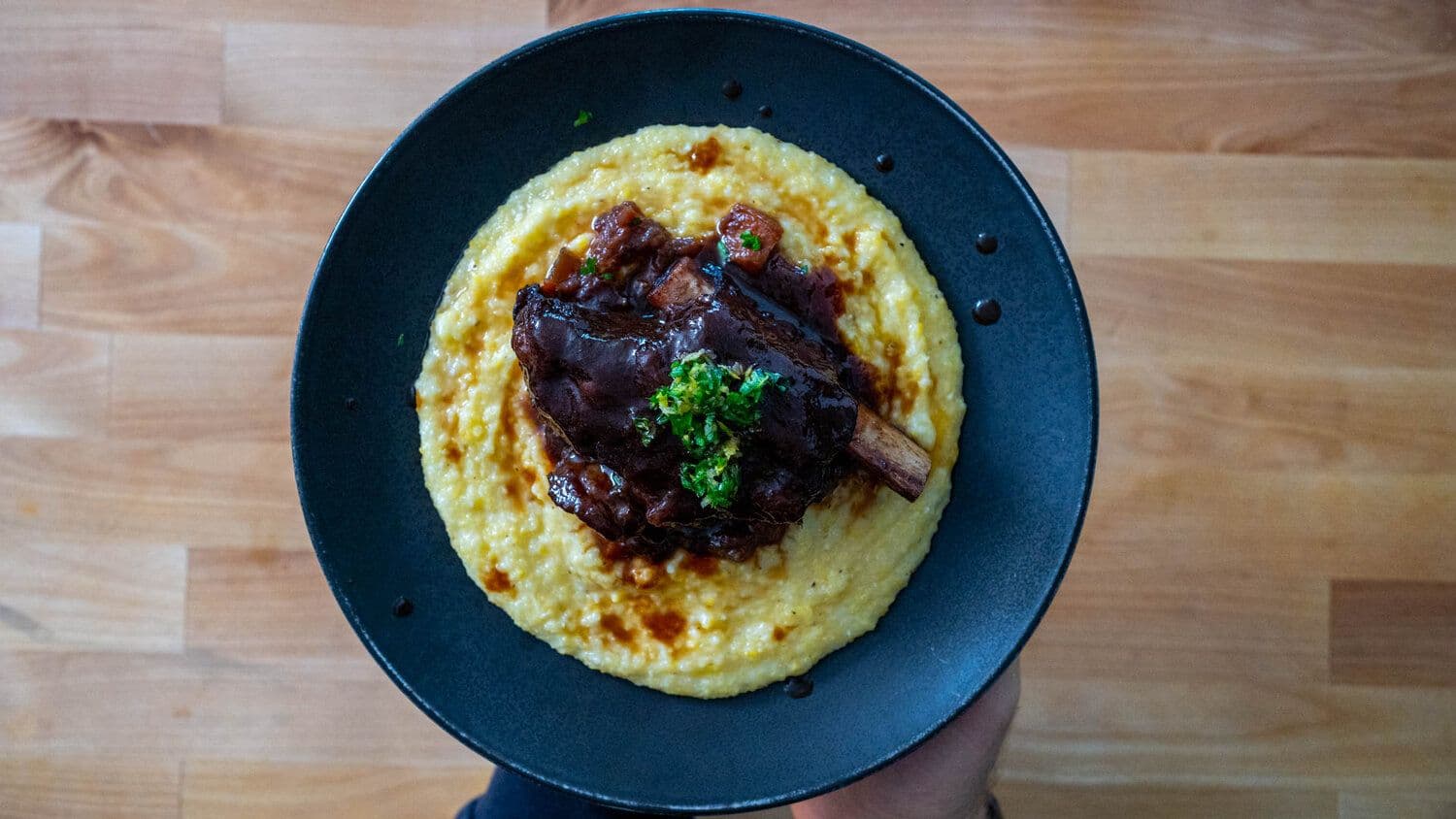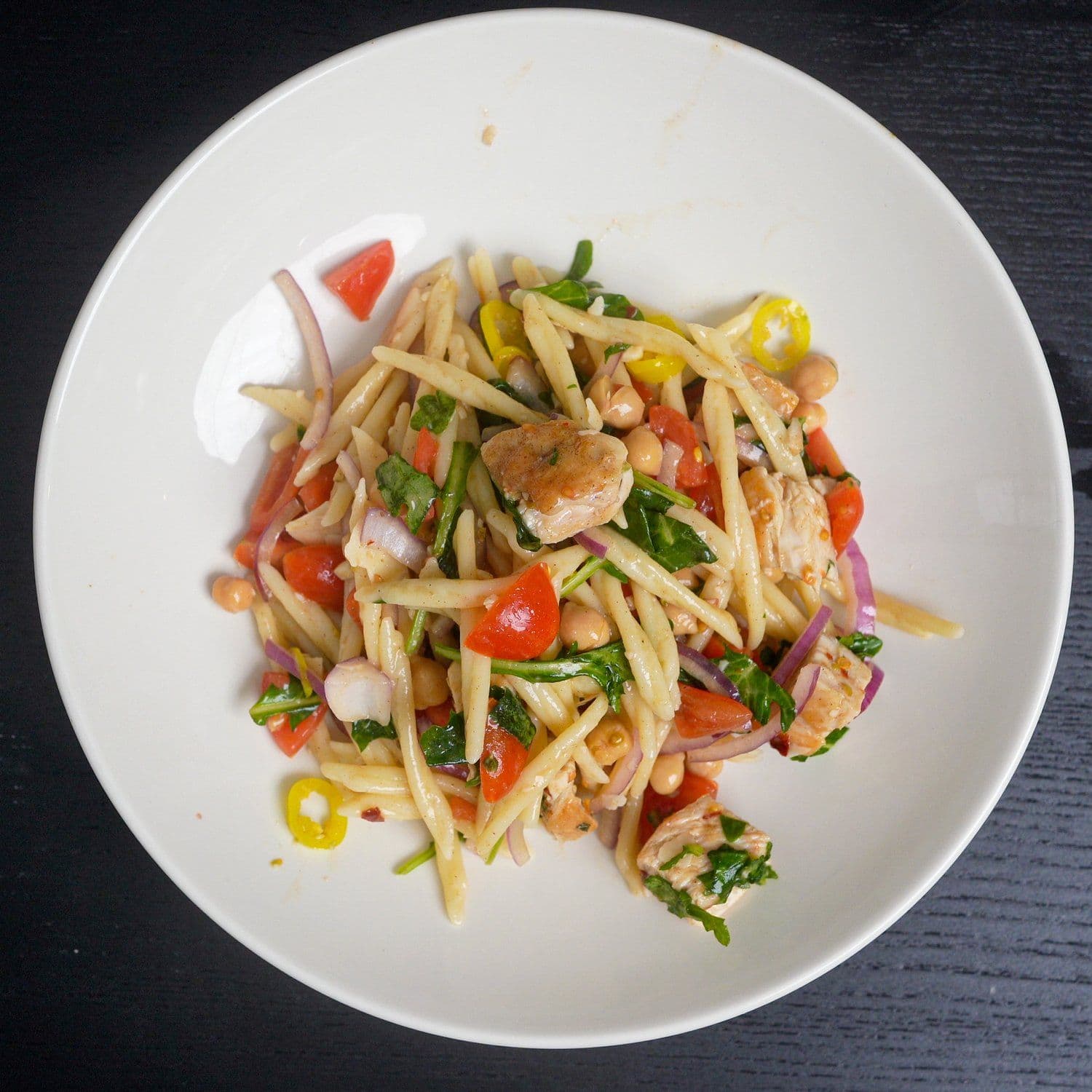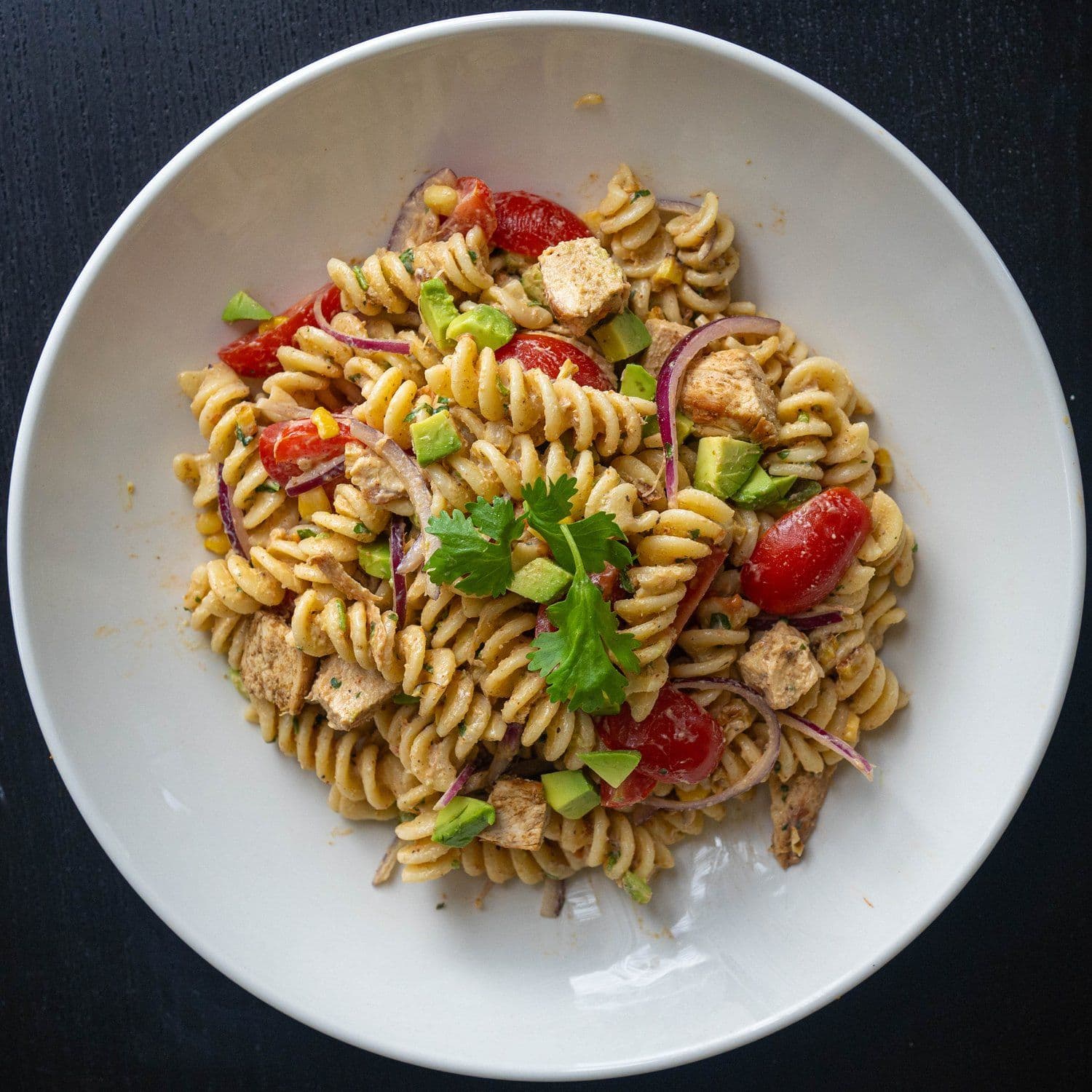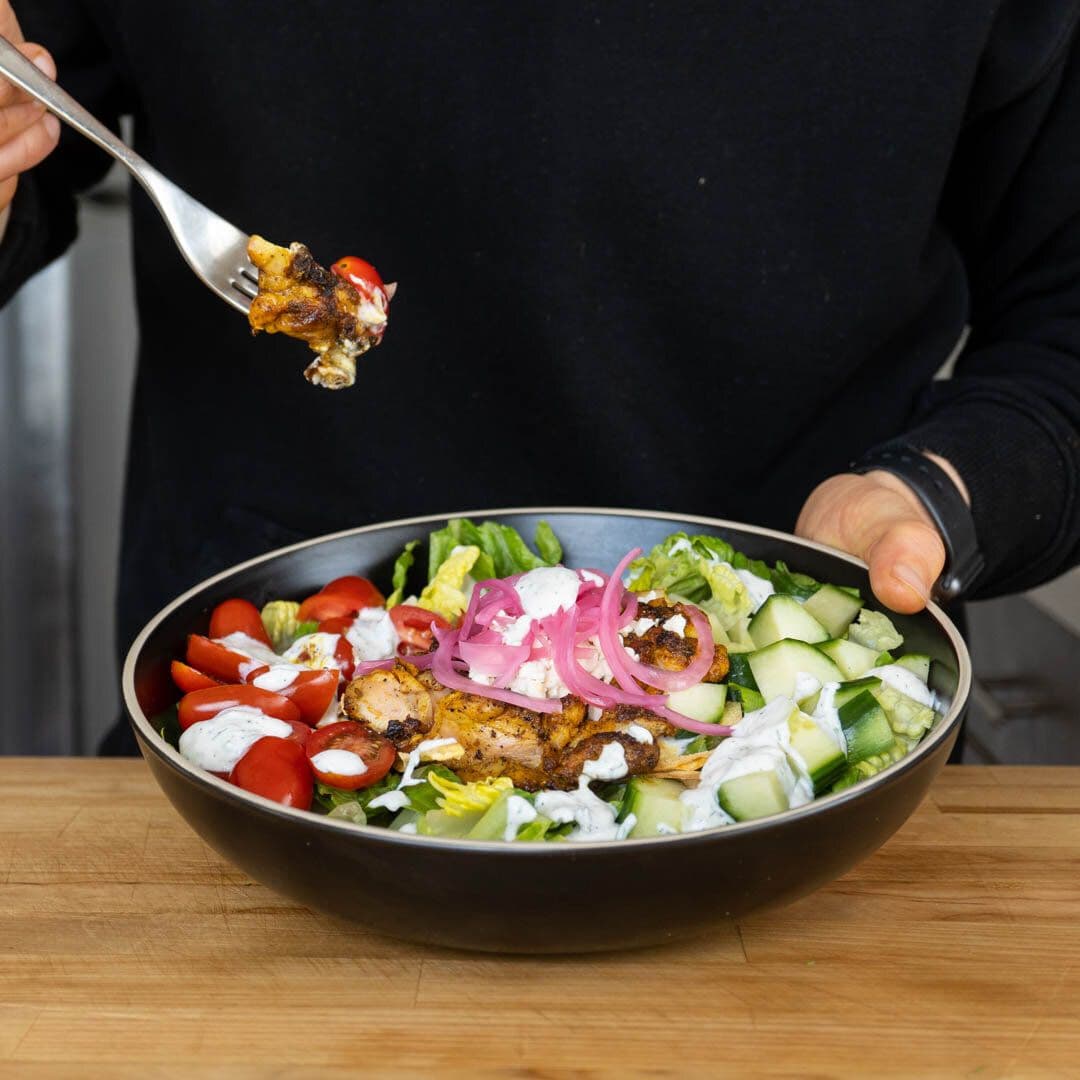A chimichurri is made up of these 4 parts:
- Herbs
- Fat
- Acid
- Aromatics + Spices
Understand the components
Each element plays a vital role.
- The herbs provide the base substance, color, and aroma to the sauce.
- The fat provides an unctuous mouthfeel and transports flavors to our tastebuds.
- The acid adds brightness and contrast. It also stimulates salivation for increased pleasure.
- The aromatics and spices supplement the herbs' flavor.
A flexible format
Use what you have in the fridge. While traditionally herbs (parsley, cilantro) make up the dominant portion of the sauce, the ingredients and amounts are up to you.
Tips
You usually want more fat than acid. Start with a 3:1 fat-to-acid ratio and adjust from there — You’ll want just enough liquid to coat and submerge the chopped vegetables for a pourable condiment.
To blend or not to blend? Both methods yield good results but with differences in texture and taste.
- Blending is easier and results in a homogeneous paste, while hand chopping, although more time-consuming, provides a crunchier texture with more varied flavors in each bite.
For extra flavor, hydrate dry spices with a splash of hot water before mixing in. This allows them to bloom and release more aromatics before becoming coated in oil.
- This is a common maneuver with dried oregano, especially in recipes from Argentina/Uruguay/Paraguay where the sauce originated.
Lastly, taste and adjust! Use your senses to dial in the chimichurri. You’ll have to add enough salt to bring out the flavors, and often extra acid or spices to get it just right.


